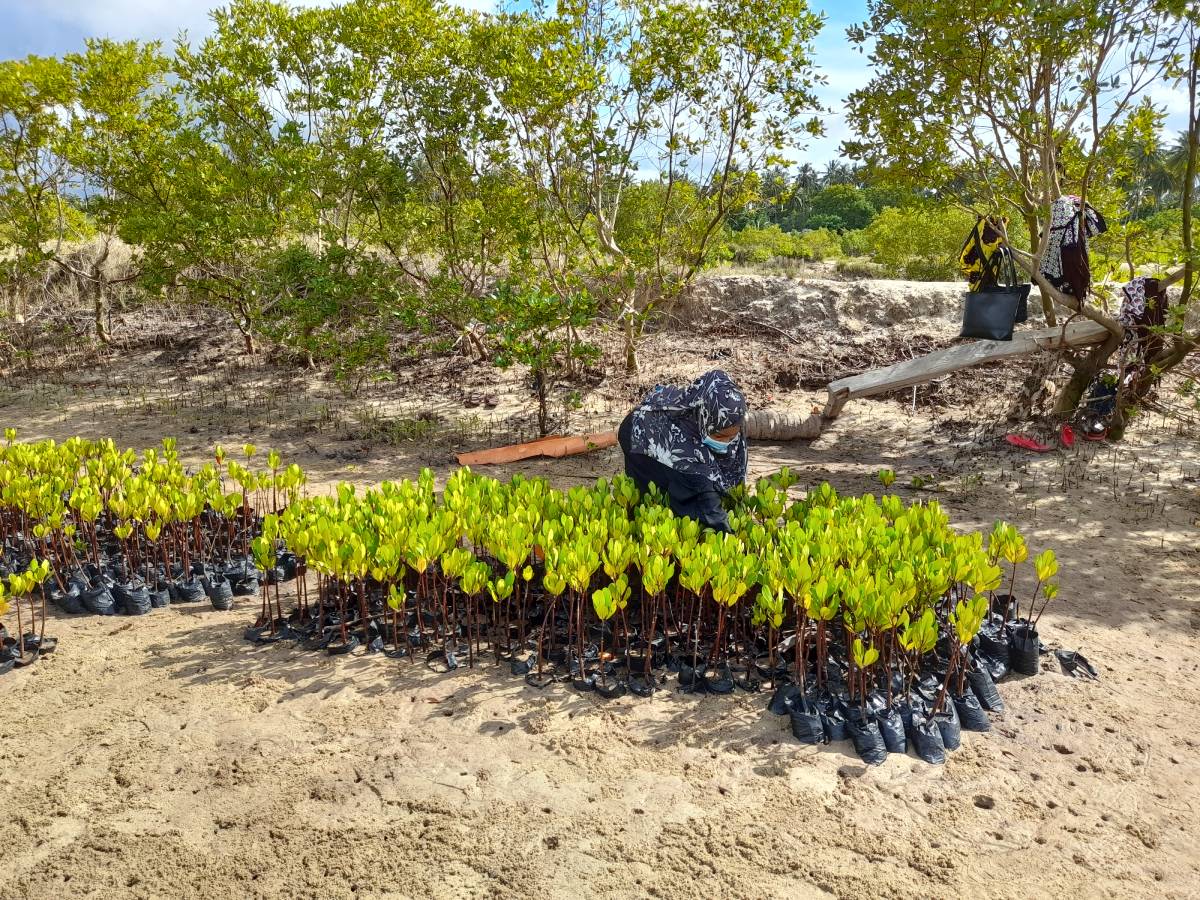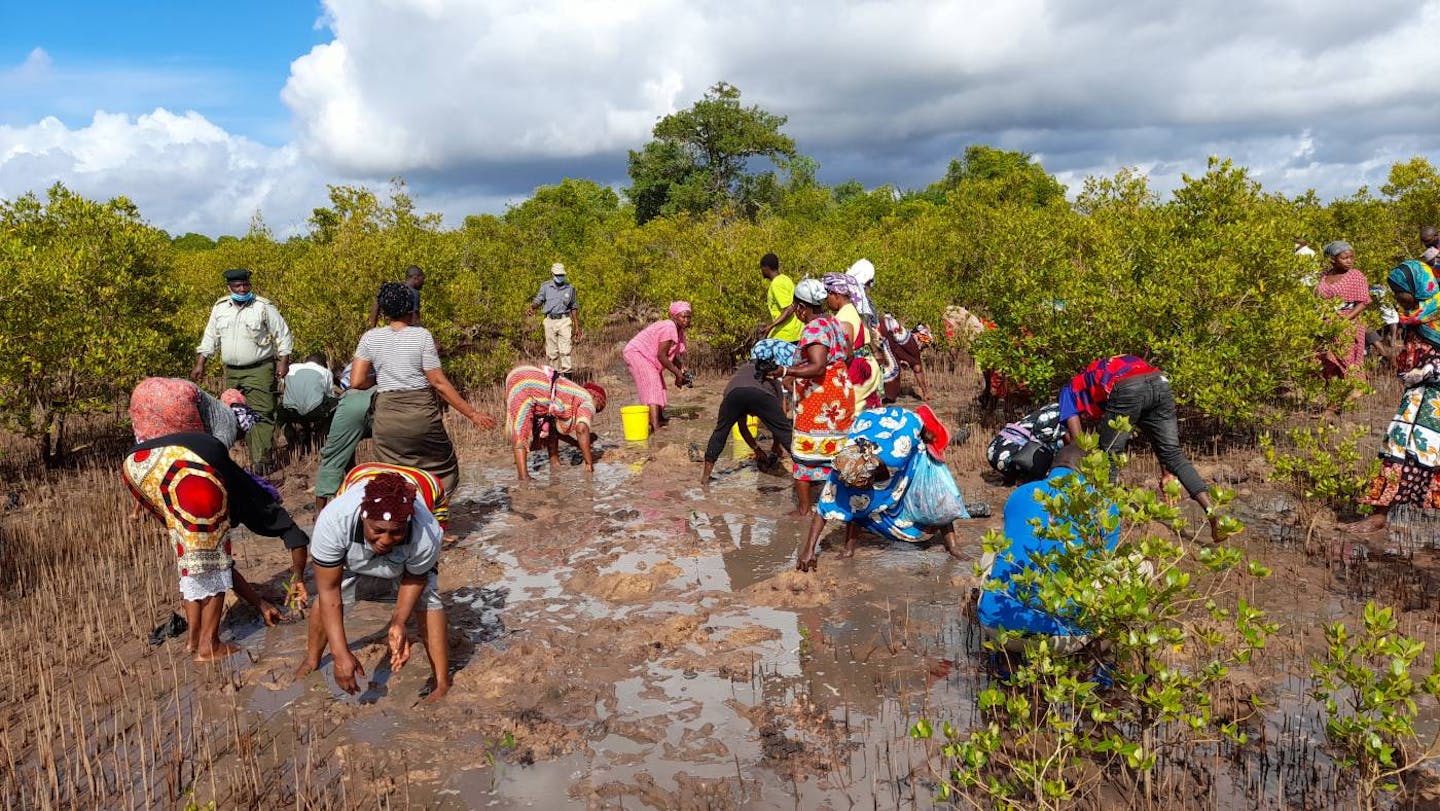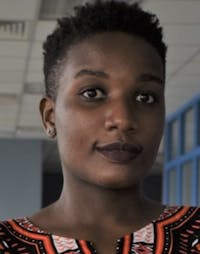A Kenyan village replants essential mangrove forests
- Nature Conservation
- Ecosystem Restoration
- Mangroves
- Sustainable Livelihoods
- Sub-Saharan Afrotropics
- Afrotropics Realm
If he was working a few years ago, 36-year-old Bomani Mohammed would be cutting down Kenya’s mangroves and selling them for charcoal or timber. Instead, he earns a living by growing them. A resident of Gasi Bay, located on Kenya's eastern African coast, he is optimistic about the future. He and more than 3,000 of his neighbors have stopped logging mangroves. At a crucial time too, where their village is at risk of being submerged due to rising sea levels.
Since the inception of a community-led project known as “Mikoko Pamoja,” a Swahili word for “Mangroves Together,” Mohammed has benefited through various initiatives of reforestation. It has also made him change his perception of mangrove trees. He is one of many Kenyans benefitting from the rising market of “carbon credits.” In this process, international clients, often companies, can pay to compensate for their greenhouse gas emissions. They pay to restore mangrove forests, one of the best sources of blue carbon, and then count it as “compensation” for their emissions.
Every month, Mohammed and members of his community take part in mangrove planting activities. Recently, as the world marked International Day for Conservation of Mangroves, they planted over 5,000 seedlings in Gasi Bay with various other Kenyan government officials.

Mangrove seedlings which Mmikoko Pamoja, a community project plants and uses as a restoration method to gain and trade carbon credits. Image credit: Courtesy of Cece Siago
Restoring mangroves for money
Due to limited job opportunities because of low education levels, most of the residents of Gasi Bay rely on fishing as their main source of income along with the sale of charcoal and logging. According to Mohammed, interventions by Mikoko Pamoja have helped the community shift focus to conserving mangroves. They have also been educated on the importance of protecting the environment.
“Previously, we would cut the mangroves. But a lot of soil used to be washed into the water affecting our fishing activities. These affected their breeding areas and fish stock for fishermen, who are the majority in my community. (Now,) all the children can go to school because, through the proceeds of the trade, we have been funded to repair the roofs of schools where classes were worn out. All villagers now have access to piped water and the children are provided with balls to play with.” Bomani Mohammed, Mikoko Pamoja
According to Rahma Rashid Kivugo, the project coordinator in the community, the initiative was launched in 2012 due to the high rate of mangrove exploitation that was occurring in the area. This public initiative has also been replicated by surrounding communities. A similar project, Vanga Blue Forest Project, is also trading carbon credits in mangrove conservation and restoration.
Despite the project being a success, they are still faced with challenges such as continued deforestation. This is due to the absence of official boundaries where the mangroves are planted. The volatility of the carbon market has also posed a major challenge as prices fluctuate depending on supply and demand. It has also proven difficult to meet the technical requirements of ecosystem restoration because of the unavailability of seedlings.
Despite these challenges, Kivugo said the project has earned a good income for local communities, which is currently being invested in different projects around the area. This amount has been increasing for the past three years. By the end of 2020, they registered $25,000 USD in carbon credits sold. The money has been used to ensure that most of the basic needs of the locals are met through the various sponsored initiatives. This includes buying textbooks for school children, repairing worn out iron sheets, setting up clean water wells, and buying playing kits and balls for children.

A fisherman hawking fish in the village. Majority of those living in Gazi practice fishing and have adapted to planting mangroves that act as breeding grounds. Image credit: Courtesy of Cece Siago
How do they get the money?
According to Kivugo, the generated credits are sold in the following year after approval reports. The time to approve and sell the credits varies. It can take weeks depending on how the reports are made. They are then marketed by the Association of Coastal Ecosystem Services, a Scotland based charity organization that also handles the trade of credits. Afterward, buyers are issued with certificates once the trade is complete.
Dr. James Kairu, a senior Kenyan scientist working with the Kenya Marine and Fisheries Research Institute (KMFRI), who is also the brains behind the Mikoko Pamoja project, said that Kenya contributes little to global emissions but is one of the most affected by climate change. Kairu thinks it is important to have mitigations such as planting mangroves and restoring the forests to protect Kenya against the harsh effects of the crisis. He will be a representative for Kenya in the United Nations Climate Change Conference in Glasgow this November. There, countries will discuss carbon markets and their regulations.
Mikoko Pamoja has made the community and Mohamed hopeful. He believes his two-month-old child will have a better future due to reforestation. Not only in the ability to access books and water, but also to a clean environment. He aims to plant as many mangroves as he can in Gasi Bay.



